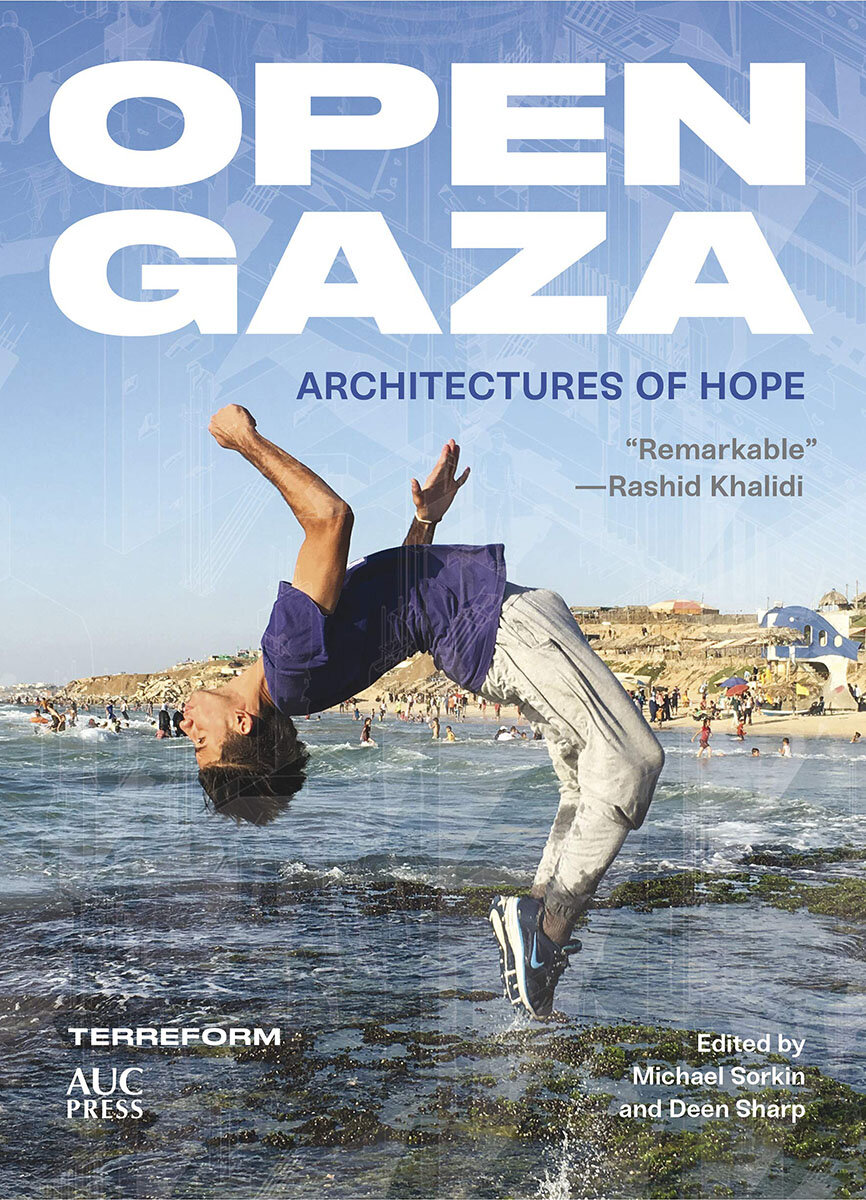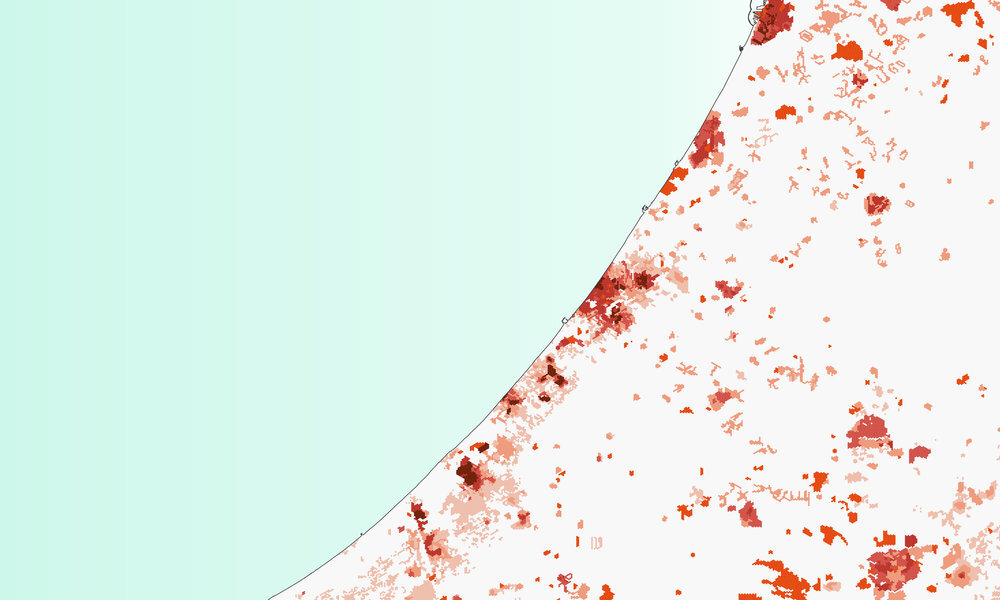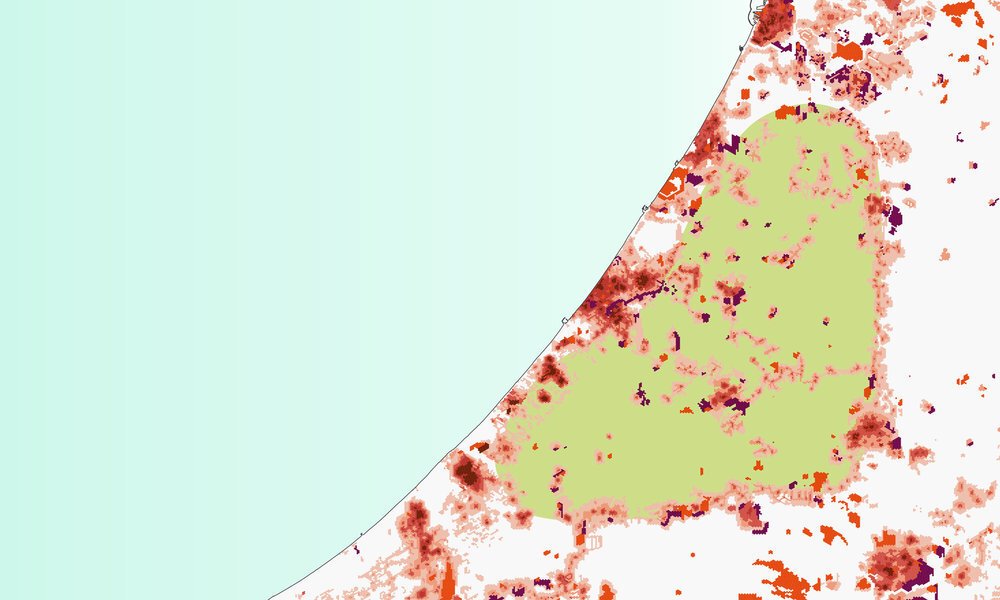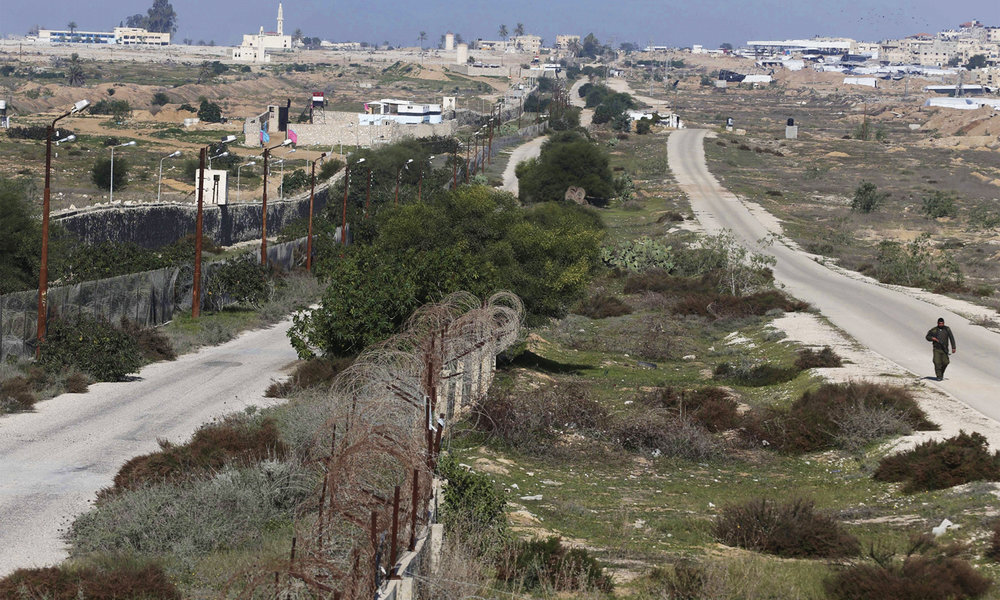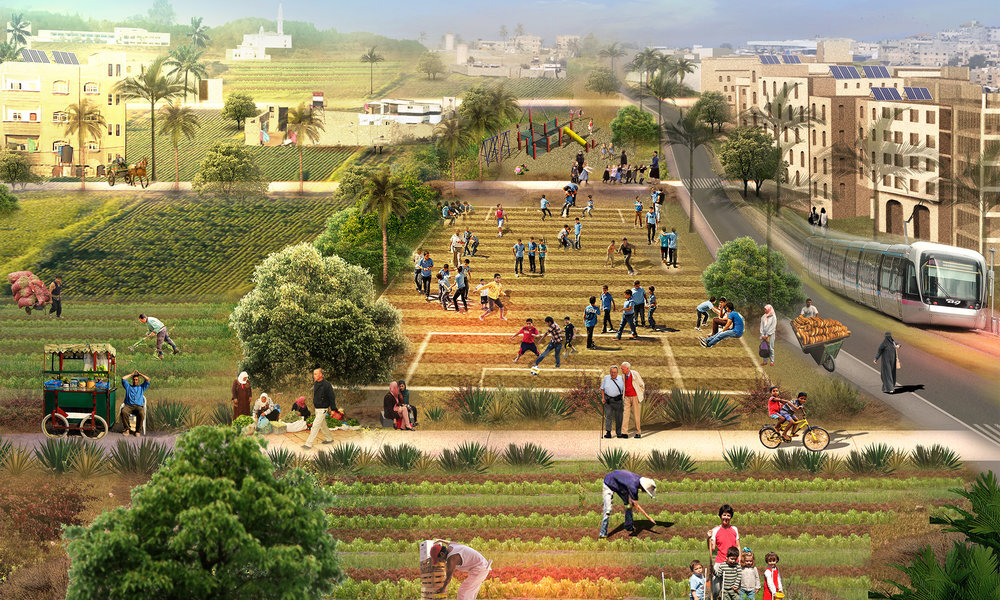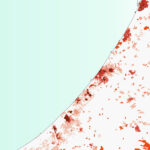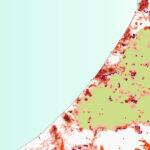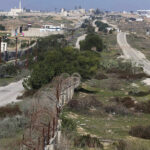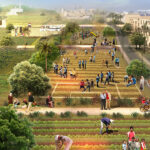Open Gaza: Architectures of Hope, Michael Sorkin & Deen Sharp, editors
American University in Cairo Press/Terreform
ISBN 9781649030733
Hadani Ditmars
I remember my first trip to Gaza, as a 26-year-old reporter for a post-Oslo Accord joint Israeli-Palestinian monthly magazine published by Hana Signora called, optimistically, The New Middle East. It was 1994, and Gaza had technically just been liberated from years of occupation. I encountered a piece of Palestine that felt a bit like an Egyptian seaside town arrested in the mid-century. It was low-tech and naturally green, a place where men road bicycles through town and children played at the beach. I interviewed gangs of kids who worked at the city dump, recycling metals and plastics to sell via Palestinian middlemen to Israeli factories, and visited an ancient Greek Orthodox church with a woman from an old Gazan Christian family. I picnicked with families amid citrus groves, inhaling the aroma of orange blossoms, and experienced incredible hospitality.
This was before Israel encouraged Hamas as a foil to Fatah, even before Arafat’s triumphant, if brief return in a helicopter, before he holed up in the ruins of his Mukataʿa fortress near Ramallah … and before Rabin was assassinated by a religious settler extremist. Somehow, in that moment, Gaza felt like a newly reawakened Sleeping Beauty, a place where movement was free, and the future was wide and open and full of promise.
Now, some 27 years later, as Gaza struggles to recover from yet another round of Israeli bombings, the situation looks bleak. But a recent tome published by Terreform and AUC press called Open Gaza: Architectures of Hope, offers an alternate vision, and one that somehow recalls that feeling I first had about the place in 1994. The Gaza of this handsome book is one that transcends the excesses of occupation via imagination and innovation, resilience, and ultimately courage.
Open Gaza is a book that dares to subvert the tired old narratives of despair and gives agency to Gaza’s 1.8 million inhabitants via the magic of architectural intervention. And yet, while edited by architects/academics and activists Deen Sharp and the late, great Michael Sorkin, the book does not ignore the brutal realities of occupation, but rather, in suggesting solutions both in spite of it and for a hoped-for post-occupation future, underlines them. As they write in their introduction, “It was the fatal delusion of modernist architecture and planning that their spatial practices by themselves transform the social and political realms. We are under no such illusions. Nor do we have the slightest doubt that substantive change can only occur if Israel’s boot is lifted from Gazan throats and Palestinian national aspirations are realized.”
As per the dynamic cover photo depicting a young boy doing a parkour inspired back flip on the Mediterranean shore, Open Gaza dances over and around the constraints of occupation, using them as materials for deconstructing the politics of space.
Here one finds cities of crystal, as imagined by Craig Konyk in a chapter where he proposes a rebuilding strategy for Gaza City, in which “glass is the material of choice that allows the destruction to remain visible.” By reinventing public sites destroyed by Israeli airstrikes as transparent structures — ranging from a toppled minaret to an office tower cocooned in glass — his futuristic renderings reveal both the strength and vulnerability of broken landscapes and speak to what he hopes will be a “more open and progressive future.”
There is a powerful chapter on the tunnels of Gaza, so key to smuggling in the necessities of life as well as construction materials. It’s written as a compelling and often frightening underground travelogue by a writer under a pseudonym — underscoring the omnipresent danger of both inhabiting and documenting Gaza. Another, in this age of climate change emergency, proposes a protective solar dome, as imagined by Chris Mackey and Rafi Segal, while chapters on “Re-Ecologizing Gaza” (by Fadi Shaaya and Visualizing Palestine) and “Social Hydrology: a Design Resistance” (by Denise Hoffman Brandt) offer green foils to the environmental destruction imposed by occupation. “Natural Gaza,” a chapter by Romi Khosla, suggests building a memorial to the Nakba that can also engender peace and reconciliation, while Helga Tawil-Souri writes of her idea to create an alternate kind of IPN — not an Internet Phone Number but an Internet Pigeon Network that easily subverts existing Israeli technology.
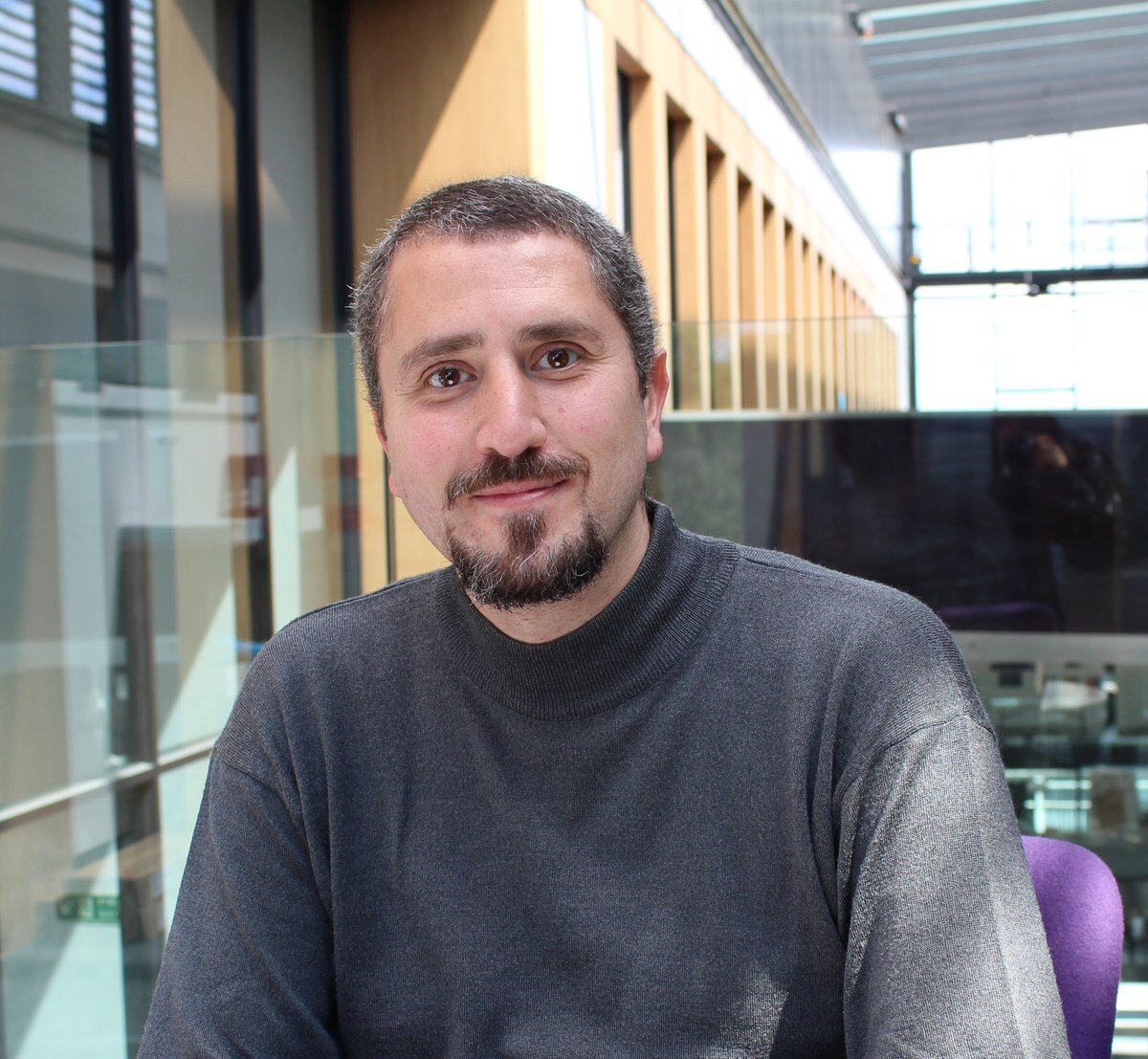
A chapter by Alberto Foyo and Postopia called “Redrawing Gaza,” presents a project that subverts the Sykes/Picot “line in the sand” that sealed the fate of so many modern Middle Eastern nations by decolonizing it as a masharabiya-inspired “fabric of architecture and agriculture, knitting these together to form a fertile fabric, one that can defiantly position itself as a reconceptualised utopia.” Their drawings weave together urban and rural landscapes, embracing them with the traditional screen like patterning of the masharabiya as an architectural, textile like healing art — a balm designed for “Gaza’s burned skin.”
The book’s more futuristic visions are balanced by built projects like the Qattan Center for Children, in a chapter written by its architect, Omar Yousef. But a chapter called “Architecture of the Everyday,” by Gazan architect Salem Al Qudwa, a Fellow in Conflict and Peace at the Harvard Divinity School on a new green, flexible, and affordable model he has designed for self-built homes, seems the most down to earth and pragmatic of the book’s many flights of fancy. They are designed to be constructed on sand and rubble and to create a “nurturing and safe environment for women and children, and to empower communities.”
The concept of “home” can be a fraught one in Palestine — with growing tensions between the symbolic and the actual. Even before forced evictions from Sheikh Jarrah in East Jerusalem earlier this year sparked a conflict that resulted in an Israeli bombing campaign on Gaza that destroyed basic infrastructure, over 2,000 housing units and displaced some 74,000 Gazans, there was an urgent need for housing. Gaza has never fully recovered from the 2014 war between Israel and Hamas, and unchecked illegal settlements in the West Bank have contributed to rising land costs that make home ownership unaffordable for most families.
After the 2014 war, when 11,000 housing units were destroyed and 160,000 damaged, Al Qudwa says that international agencies built housing that was inappropriate to local needs and climate. These included temporary wooden structures that did not accommodate large extended families, isolating people from their multi-generational support networks, and didn’t provide proper insulation for heating and cooling. He contends this was because UNRWA and other agencies employed foreign architects and didn’t consult locals. Now, as the US pledges to give millions of dollars in emergency reconstruction aid, Al Qudwa fears the cycle will repeat itself again.
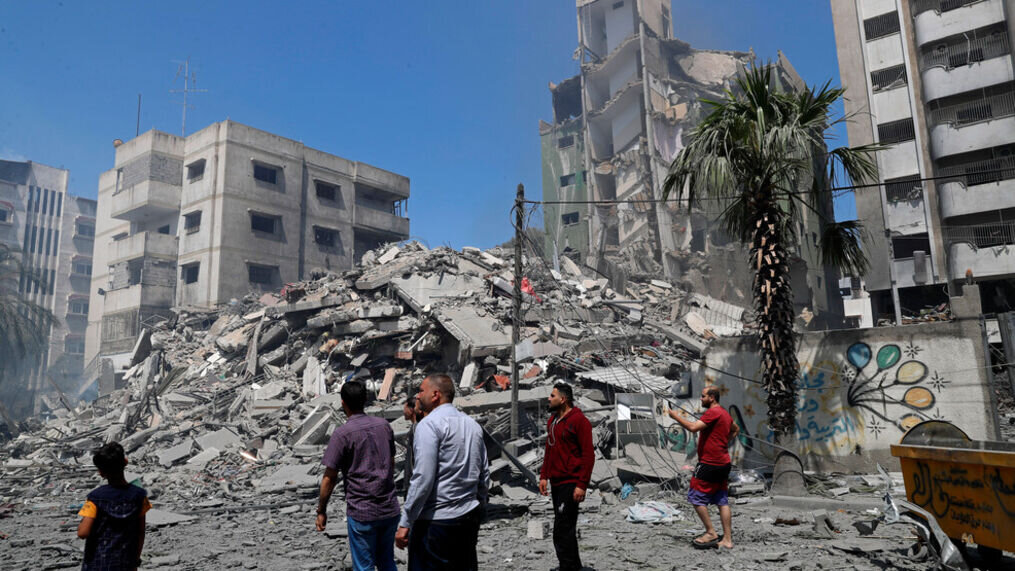
Part of the challenge, he says, beyond the Israeli blockade in place since 2007 that limits availability of building supplies, is that, “Annihilation in the Gaza Strip has become so frequent that houses are being built, destroyed and reconstructed at the same time.” But on a hopeful note, Al Qudwa sees the “architecture of the every-day” as a resource for “positive social transformation.”

His prototype is for 3-5 story homes made of concrete with proper insulation and strong foundations, a key component in creating a sense of permanence in the midst of uncertainty. As opposed to the one-story wooden homes built as temporary shelters after 2014, this model will allow families to grow and will accommodate Gaza’s many widows, who often have to sacrifice their autonomy by moving in with their in-laws. In terms of not being targeted by Israeli bombing the prototypes are also safer, Al Qudwa contends, than the plethora of high-rises that sprang up post-1994, when so many Palestinians returned from the diaspora (such as the 13-story Al Jawarha tower destroyed by the IDF on May 12th this year), and are more cost effective than current models.
Prior to the occupation, limestone was the dominant building material, but now it’s too expensive to import from the West Bank. Instead, Al Qudwa argues that concrete, imported from Israel, is the “new vernacular.” But rather than the tyranny of regimented, uniform housing blocks, his design breaks up scale and massing with brick patterning, lattice like screening, shading windows, and roof gardens. A shared service corridor is transformed into a summer courtyard, while an external communal staircase connects the different levels with a modicum of privacy.
The prototype is green friendly, incorporating solar water heating units, rainwater harvesting systems and grey water recycling, so crucial to an area with scarce water and electricity, and can be adapted for densely populated areas in Gaza City as well as buffer zones like Jabalya.
With its flat, asphalt-based bitumen roof, the design reads like a Bauhaus version of one of the traditional Gazan courtyard houses that have slowly disappeared, as the need for larger and more modern residences has grown with the population.
Al Qudwa’s model subverts prevailing trends in “emergency shelter” strategies for Gaza, as well as the likes of the much-touted planned “Palestinian city” of Rawabi, in the West Bank. Stretching across 2.4 square miles, it’s virtually indistinguishable from the suburban style housing popular in America or indeed in neighboring Israeli settlements.
His chapter is but one of many admirable ones in Open Gaza, but one that roots architectural change in pragmatic and indigenous design.
Of all the excellent chapters, it is one called “Timeless Gaza,” by Mahdi Sabbagh and Meghan McAllister, that speaks most strongly to the book’s title. Here the authors look to Gaza’s past as an interconnected trading hub linking east and west as a foil to its current boxed in, proscribed limitations and isolation.
“Traces of an open, connected, and expanded past can be found in the Gaza Strip and its nearby territories. Archaeological remnants of spice trade towns between Petra and Gaza remind us of Gaza’s centrality in an ancient trading network. Defunct British railway lines imply a past where the Strip was not a Strip at all, but part of a network of regional cities. The Salah al-Din Road, which connects the Gaza Strip from north to south, is evidence of ancient aspirations of providing continuous mobility along the Mediterranean coast, as are the archaeological remnants of Via Maris, the Roman trading line. Late twentieth century and twenty first century infrastructure — such as the bombed airport, a besieged seaport, and rapidly built tunnels —represent a contemporary Palestinian Gaza that strives to exist as a networked city in continuity with its past.”
I remember Gaza’s airport, built in 1998 amid great fanfare with an inauguration attended by Arafat and the Clintons. I flew there from Amman in 2000, to interview Naime Holoh, the first woman armed combatant for the PLO, arrested for the first time by the Israelis for violent resistance, and then arrested for non-violent resistance in the First Intifada. Now she was running a center for women and children in Jabaylia where she had grown up, that offered literacy training, childcare, and a traditional crafts collective. She and her colleagues showed me around graciously and then fed me copious amounts of chicken and rice in a mid-rise building whose top three floors were still in mid-construction.
It was the beginning of the Second Intifada, and the day I was supposed to leave, the Israelis closed the airport and later destroyed it completely, leaving flight to the likes of the young boy on the cover of Open Gaza, poised somewhere in mid-air, between that weightless thrill of anti-gravity, and the reality of occupation.
I remember Naime now and all my friends in Gaza, who, amidst grand plans, colonial maps, ancient trade routes and utopian dreams, are carving out their own architectures of hope, every single day.
See also Hadani Ditmars on Gaza’s housing challenges in Architectural Digest.



